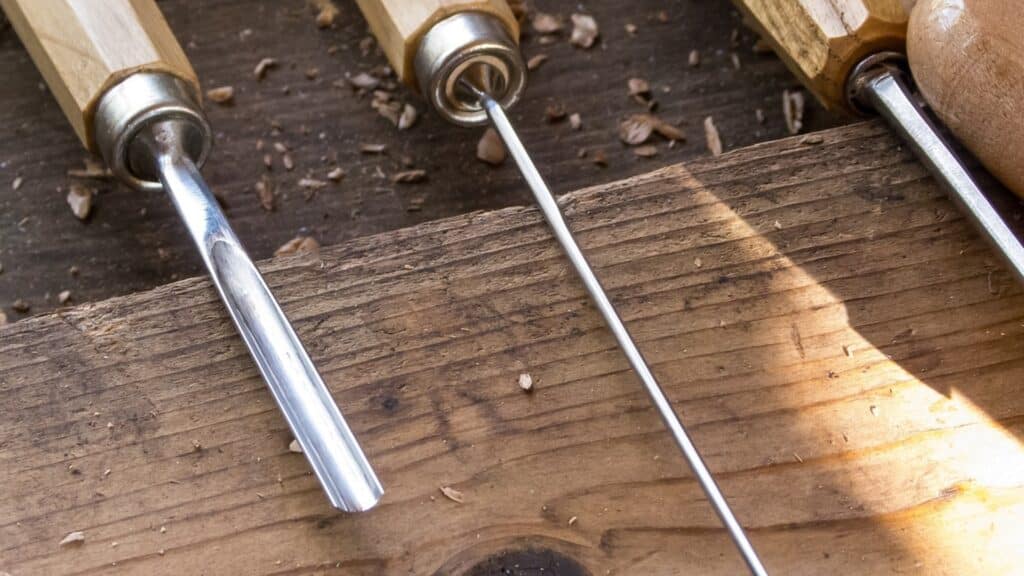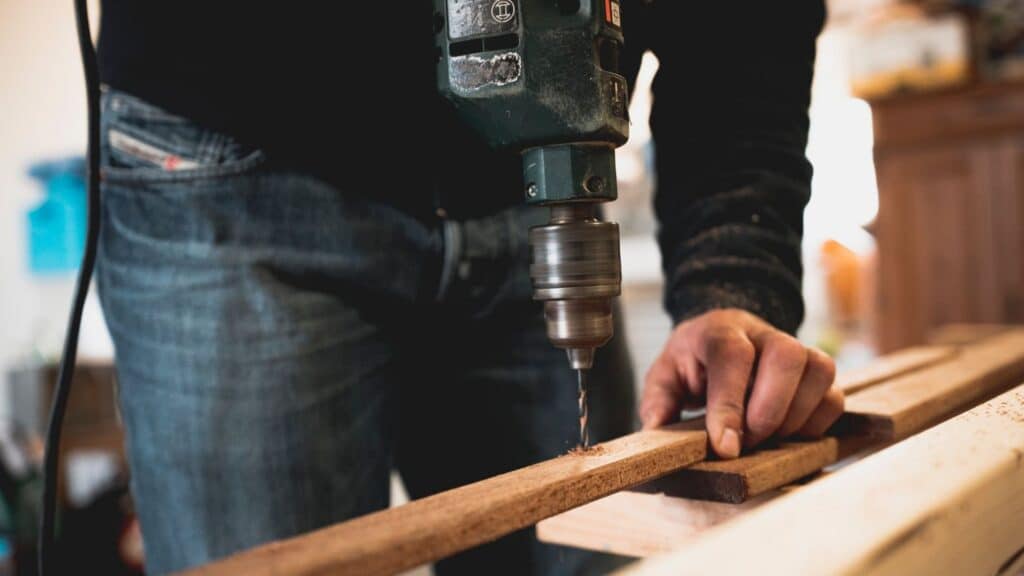Last Updated on September 7, 2023 by Pro Handyman Australia – Editorial Team
A Comprehensive Guide to Fixing a Swollen Door
In our homes, doors are more than just functional objects; they’re integral to our living spaces, contributing to aesthetics and security. It’s crucial to ensure that they’re in good condition. However, a common problem faced by many homeowners is door swelling. This comprehensive guide delves into the reasons for door swelling and offers expert solutions to address this issue effectively.
Exploring the Root Causes of a Swollen Door
Doors swell for various reasons. Understanding these causes is the first step in implementing an effective solution.

Changes in Weather and Humidity
Seasonal changes, primarily fluctuations in humidity, can cause a door to swell. Wooden doors absorb moisture during the rainy season or in areas with high humidity, leading to expansion.
Swollen Door Repair Video Guide
Poor Quality of Wood
The quality of the wood also plays a significant role. Inferior quality wood often has inconsistent grain patterns and density, causing it to absorb water unevenly and swell.
Lack of Protective Coating
The absence of a protective coating on a wooden door exposes it directly to external environmental factors, making it susceptible to swelling.
Identifying a Swollen Door: The Tell-Tale Signs
Recognizing the signs of a swollen door is essential. Look out for these symptoms.
Difficulty in Closing or Opening
A noticeable resistance while opening or closing the door often indicates door swelling.
Scraping Sounds
If you hear a scraping sound while operating the door, it’s likely due to the door brushing against the frame or the floor, signaling to swell.
Visible Signs on the Door Frame
The door frame might show signs of rubbing or scratching caused by the swollen door.
Expert Solutions to Fix a Swollen Door
After identifying the problem, it’s time to apply practical solutions.
Adjusting the Door Hinges
Start by checking the door hinges. If they’re loose, tightening them could solve the issue without requiring further intervention.
Sanding the Swollen Area
If adjusting the hinges doesn’t work, sanding the swollen area is the next step. Remember to apply a new coat of paint or finish after sanding to seal the wood and prevent future swelling.
Applying a Sealant
Applying a sealant or protective coating on the door can help prevent moisture absorption, protecting the door from swelling in the future.
Opting for Composite Doors
If the issue persists, consider replacing the wooden door with a composite door, which is less prone to swelling.
Preventing Door Swelling: Proactive Measures
Taking proactive measures can prevent door swelling. These include maintaining the proper indoor humidity level and regularly applying a protective coating to wooden doors.
Monitoring Indoor Humidity
Maintaining a 40-60% indoor humidity level can prevent doors from swelling. Use a dehumidifier if necessary.
Regular Maintenance
Regularly applying a protective coating to the door can significantly reduce its susceptibility to swelling.

Comprehensive Guide to Fixing Swollen Doors: Causes and Solutions
Understanding how to repair swollen doors could lead to considerable savings, eliminating the need for professional assistance. Picture this: you’ve meticulously selected a splendid wooden door for your new home, providing aesthetic appeal and smooth operation. However, this wooden door begins to swell over time due to certain atmospheric conditions, hindering its functionality. It no longer glides open or shuts quickly, requiring substantial effort. This article will equip you with the knowledge to effectively tackle such a predicament and repair swollen doors.
Root Cause: Moisture & Swelling
Central to the issue of doors becoming difficult to operate is moisture absorption. Natural wood, both original and artificial, is prone to absorb moisture. This primarily occurs along the edges of wooden doors that must be more effectively sealed or varnished. As a result, the door swells, leading to sticking in the frame or scraping on the floor.
Factors Contributing to Door Swelling
- Climate and Seasonal Variations: Wooden doors primarily swell or shrink due to changes in weather and season. Wood naturally absorbs heat or humidity from the air and expands upon moisture absorption. The door starts rubbing on the frame as it expands, making it challenging to open or shut, especially during damp and humid monsoon seasons.
- Unsealed or Aged Doors: Unsealed or old doors can retain moisture, resulting in wood swelling and potential cracks as the door dries.
- Location of the Home and Doors: The door’s position, as well as your home’s location, influences swelling. Doors in southern and western areas are more exposed to sunlight, which can deteriorate their finish. Without adequate protection, these doors may begin to swell.
- Indoor Dampness: Dampness can build up in homes for various reasons, including inadequate ventilation, insufficient insulation, in-house wet clothing, and open bathroom doors. This can cause moisture to accumulate, leading to unpleasant odors and wood swelling.
The Dilemma of Swollen Doors
A swollen door can prove to be a significant inconvenience. Opening or closing a swollen door requires extra physical effort, which can damage the door’s joints if they need to be thick enough or poorly crafted. Moreover, a door that expands excessively can become nearly impossible to close, restricting room usage and causing difficulties for children and senior family members.
Preemptive Measures to Prevent Door Swelling
Provision of Gap While Installing the Door
A skilled carpenter or builder will ensure a 2-3mm gap when installing the door. This allowance accounts for potential expansion due to moisture absorption from changing atmospheric conditions.
Sealing the Wooden Door
Applying an exterior sealer before attaching the door to the frame is crucial when purchasing a new wooden door or window or while installing it. While wooden doors typically receive a protective coat post-manufacture, this protection is often insufficient once installed.
Hence, applying sealer to both sides of the door is vital, particularly on all four edges and the base. As standard practice, apply three coats of sealer, lightly sanding between coats with fine steel wool. Refer to the manufacturer’s instructions for the product in use. This process should be repeated every 2-3 years for optimal protection.
Painting the Wooden Door
If painting the exterior door is part of your home décor plan, applying a wood primer before painting is essential. Also, make sure to use paint intended for exterior doors. Regularly checking for cracks in the finish is necessary to prevent moisture penetration and door swelling.
Before commencing any repair work, ensure that the difficulty in door operation isn’t due to sagging hinges or loose screws.
Effective Methods to Fix a Swollen Door
Use of Lubricants
Lubricants can significantly help prevent door swelling. Apply a dry soap bar, paraffin wax, petroleum jelly, or household lubricant spray on the door surfaces that stick to the frame to reduce sticking. However, if the door still sticks post-lubrication, it might be due to improper door hanging or sagging hinges.
Dehumidifier Usage
To combat moisture absorption from your house and the surrounding atmosphere, using a dehumidifier can be beneficial. While using this device, remember to close your house’s external doors and windows. Wood swelling is a common occurrence when exposed to humid air.

Employing a Heat Gun or Hairdryer
Yes, a swollen door can shrink! A hairdryer or heat gun can be used to remove moisture. Pointing the heat gun at the swollen portion of wood allows trapped air or moisture to escape. Keep the drying tool around 30cm from the door to prevent burning or damaging the wood. For painted doors, a rotating fan can be utilized. You can strip the paint down and repaint the door if the paint flakes.
Fastening Screws and Sanding Door Edges
Fastening screws on the iron wares is another method of repairing a swollen door. This includes strike plates and hinges. If tightening the screws doesn’t work, mark the swollen areas with a pencil, then sand these areas with coarse sandpaper. This process might require removing the door from the hinges to sand all edges, which can be labor-intensive uniformly.
Conclusion
Dealing with a swollen door doesn’t have to be a daunting task. With a comprehensive understanding of the causes and solutions, you can easily tackle this common issue and ensure the longevity and functionality of your doors.
